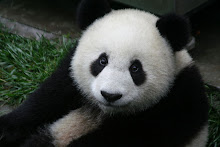And the voice of the familiar female announcer rings in the Putra LRT, the same voice you may hear at banks or post offices. She must be making millions out of those patented recordings.
Once you've stepped out of those air conditioned Putra wagons, it is most likely that you will be greeted by the scorching heat of Kuala Lumpur. After an escalator ride and a few flights of stairs downwards, you can observe Central Market, or Pasar Seni.
Erected in the late 1880s, it served as a wet market for the folks of the city. I could assume it was a far cry from the current wet markets we are able to find in the city. Whereas, there were no posh supermarkets like Carrefour, Cold Storage, or Pasar Borong Mydin back in those days. Instead, you may hear voices bargaining for fresh products such as meat, chicken, fish or vegetables.
Pasar Seni or Pasar Budaya, Central Market’s names in the Malay language, do not denote the exact same meaning in English. ‘Seni’ or ‘budaya’ carry the meaning of ‘arts’ and ‘culture’ respectively, and aptly so, since now it has become a de facto symbol of arts and culture in Kuala Lumpur.
Throughout the years, tourists have thronged Central Market for a piece of memento from Kuala Lumpur, ranging from handy crafts, t-shirts, key chains, so on and so forth. For Malaysians, it lies deep in our culture not only as a historical landmark, but also as the place where dreams are made of.
Here you can find street artistes, a painter or a musician, strutting their stuff in and about the building.
Dreams in the form of a hollowed, six stringed instrument. Finding means of life, chord after chord ringing in the humid air of the city, singing songs in pure unadulterated vocals, clad in their knee-torn jeans and ragged t-shirts. Some may come from far away, with the hopes of securing a recording contract or at least, an offer for a gig. They dare to dream. Passer bys show their acknowledgement by throwing coins into the hat or the guitar bag lying in front of the performer, and he would thank them by nodding his head as a sign of mutual respect.
A painter manifests his dreams through brushes and pencils. Upon requests from customers, he paints a portrait or a caricature of them to pocket some money. He does a little more touch up to his artwork before he finally hands them the final piece.
These everyday people are the heart and soul of the city. They are the myriads of colour which brighten up the life of Kuala Lumpur.
The significance of Central Market stems from it's functional evolution; from being a mere wet market to be one of the most famous landmarks of Kuala Lumpur. There will come a day when all your MidValleys, KLCCs, Times Squares and Pavillions lose their significance, being replaced by more modern and sophisticated shopping malls.
However, Central market, with all its humble splendour will still be the heart and soul of Kuala Lumpur for ages and ages to come, ingrained with history and a culture unparalleled of.


0 comments:
Post a Comment